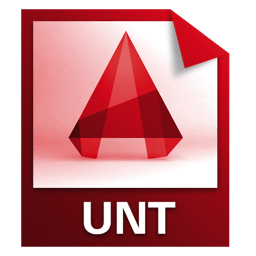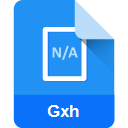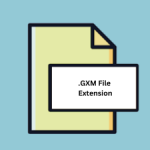.UNT File Extension

What is an UNT file?
The .UNT file extension is associated with AutoCAD, a popular computer-aided design (CAD) software developed by Autodesk. These files are used for defining units of measurement within AutoCAD drawings, ensuring consistent and accurate scaling and measurement.
More Information.
The .UNT file was introduced to address the need for a standardized way of handling different units in CAD drawings. AutoCAD, being widely used in various engineering, architecture, and design fields, required a robust method to manage units such as inches, feet, meters, and millimeters, among others. The .UNT file serves this purpose by providing a consistent format for unit definitions and conversions.
Origin Of This File.
The .UNT file was created by Autodesk as part of AutoCAD’s functionality to handle different units of measurement. It is designed to facilitate the process of defining and converting units in a standardized way, crucial for maintaining precision in design and engineering projects.
File Structure Technical Specification.
The structure of a .UNT file typically includes the following elements:
- Header Information: Contains metadata about the file, such as version information and creator details.
- Unit Definitions: Lists the various units of measurement defined within the file. Each unit definition includes:
- Unit Name
- Conversion Factor (to a base unit)
- Abbreviation
- Comments/Notes: Optional sections for including comments or additional notes about the units.
How to Convert the File?
Windows
- Using AutoCAD:
- Open AutoCAD.
- Go to the
Filemenu and selectOpento open the .UNT file. - Use AutoCAD’s built-in export features to convert the unit definitions to another format, such as XML or CSV.
- Save the converted file in the desired format.
- Using a Text Editor:
- Open the .UNT file in a text editor like Notepad++.
- Manually copy the content and paste it into a new file in the desired format (e.g., .txt or .csv).
- Save the new file.
Linux
- Using AutoCAD via Wine:
- Install Wine on your Linux system.
- Install AutoCAD using Wine.
- Follow the same steps as for Windows to open and convert the .UNT file.
- Using a Text Editor:
- Open the .UNT file in a text editor like Gedit, Nano, or Vim.
- Manually copy the content and paste it into a new file in the desired format.
- Save the new file.
- Using Command Line Tools:
- Use
sedorawkto process and convert the .UNT file content.
- Use
Mac
- Using AutoCAD for Mac:
- Open AutoCAD for Mac.
- Use the
Filemenu to open the .UNT file. - Export the file to the desired format using AutoCAD’s export features.
- Save the converted file.
- Using a Text Editor:
- Open the .UNT file in a text editor like TextEdit or Sublime Text.
- Copy and paste the content into a new file in the desired format.
- Save the new file.
Android
- Using Text Editor Apps:
- Open the .UNT file in a text editor app like Jota Text Editor or QuickEdit.
- Copy the content and paste it into a new document in the desired format.
- Save the new file.
- Using File Conversion Apps:
- Use a file conversion app available on the Google Play Store to convert the .UNT file to the desired format.
iOS
- Using Text Editor Apps:
- Open the .UNT file in a text editor app like Textastic or iEditor.
- Copy the content and paste it into a new document in the desired format.
- Save the new file.
- Using File Conversion Apps:
- Use a file conversion app available on the App Store to convert the .UNT file to the desired format.
Others
- Using Web-Based Text Editors:
- Open the .UNT file using a web-based text editor like Google Docs.
- Copy the content and paste it into a new document.
- Save or export the document in the desired format, such as .txt or .csv.
- Using Online Conversion Tools:
- Upload the .UNT file to an online file conversion tool (e.g., Zamzar or Convertio).
- Select the desired output format.
- Download the converted file.
- Using Programming Scripts:
- Write a script in Python or another programming language to read the .UNT file and output it in a different format.
Advantages And Disadvantages.
Advantages:
- Standardization: Provides a consistent method for defining and converting units, reducing errors in measurements.
- Compatibility: Ensures that unit definitions are compatible across different AutoCAD projects and versions.
- Simplicity: Plain text format makes it easy to read and edit.
Disadvantages:
- Limited Use: Primarily used only within AutoCAD, limiting its applicability to other software.
- Complexity for Non-Users: May be difficult to understand or use for individuals not familiar with AutoCAD or CAD concepts.
How to Open UNT?
Open In Windows
- AutoCAD: Use AutoCAD to open and edit .UNT files directly.
- Text Editor: Since .UNT files are plain text, they can be opened with any text editor like Notepad or Notepad++.
Open In Linux
- AutoCAD (via Wine): AutoCAD can be run on Linux using compatibility layers like Wine.
- Text Editor: Use text editors like Gedit, Nano, or Vim to open .UNT files.
Open In MAC
- AutoCAD for Mac: AutoCAD is available for macOS and can open .UNT files.
- Text Editor: Use text editors like TextEdit or Sublime Text.
Open In Android
Text Editor Apps: Use text editor apps available on Android, such as Jota Text Editor or QuickEdit.
Open In IOS
Text Editor Apps: Use text editor apps available on iOS, such as Textastic or iEditor.
Open in Others
- Web-Based Text Editors: Use web-based text editors like Google Docs or any other online text editor to view and edit .UNT files.
- File Conversion Tools: Use online file conversion tools to convert .UNT files into more universally accessible formats if needed.













